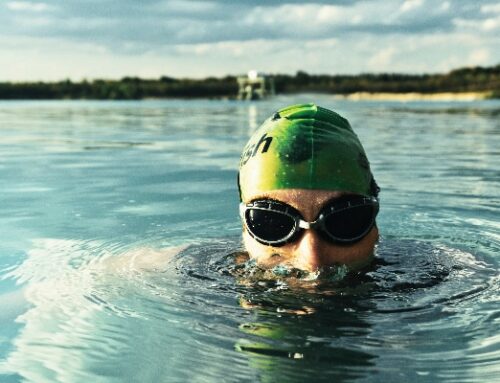Swimming goggles have become an indispensable accessory for swimmers of all levels, providing clarity and protection underwater. The journey of these essential swimming tools traces back to centuries ago when humans first explored the underwater realm. In this blog post, we will delve into the fascinating origin and evolution of swimming goggles.
Ancient Beginnings:
The concept of eye protection while underwater can be traced back to ancient civilizations. Historical records suggest that Persian pearl divers in the 14th century used rudimentary goggles made of animal horns to shield their eyes from the harsh saltwater. Similarly, the Inuit people are believed to have crafted goggles from walrus ivory with thin slits to allow limited visibility while protecting their eyes from the reflective sunlight off the ice and snow.
19th Century Innovations:
The 19th century saw significant developments in underwater exploration and the need for improved eye protection. Divers began experimenting with various materials to create more effective goggles. The use of glass lenses, rubber, and metal frames became common, laying the foundation for modern swim goggles. However, these early prototypes were often bulky and uncomfortable, limiting widespread adoption.
World War II Advances:
The Second World War played a pivotal role in the evolution of swimming goggles. The military’s need for underwater reconnaissance and sabotage operations led to the development of specialized goggles for naval and combat divers. These wartime innovations included improved sealing mechanisms, adjustable straps, and anti-fog coatings, setting the stage for the post-war commercialisation of swimming goggles.
Post-War Commercialisation:
After World War II, the surplus of military-grade materials and technological advancements paved the way for the mass production of swimming goggles for civilian use. Companies like Speedo and Aqua Sphere began manufacturing goggles designed specifically for recreational swimmers, incorporating comfort, visibility, and durability into their designs. The adoption of lightweight and durable materials, such as plastic and silicone, further enhanced the user experience.
Technological Advancements:
As technology continued to advance, swimming goggles underwent further refinements. Anti-fog coatings, UV protection, and hydrodynamic designs became standard features. Manufacturers also introduced a variety of lens tints to enhance visibility in different lighting conditions. Customisation options, including prescription lenses, made swimming accessible to individuals with visual impairments.
Contemporary Trends:
In recent years, swimming goggles have evolved to cater to various swimming disciplines, including competitive swimming, open water swimming, and triathlons. Specialized designs, such as low-profile racing goggles and wide-view panoramic lenses, have become popular among athletes seeking peak performance.
Conclusion:
The journey of swimming goggles from ancient makeshift solutions to modern, high-tech accessories is a testament to human innovation and the pursuit of excellence in aquatic activities. Today, these indispensable tools continue to evolve, providing swimmers with the clarity and protection needed to explore the underwater world with confidence.







